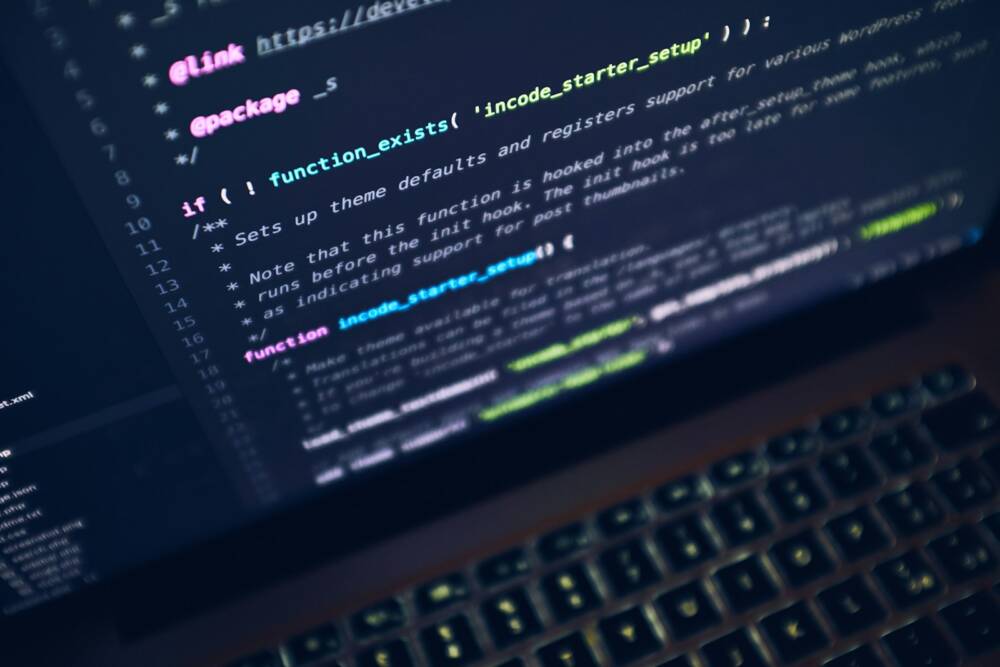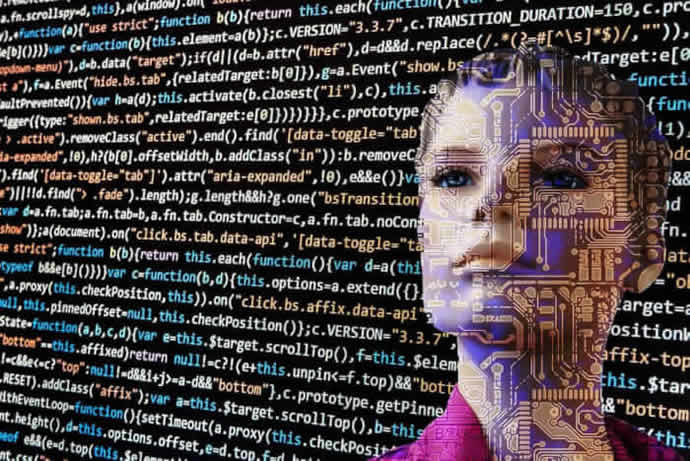Imagine a world where trades are executed flawlessly, where decisions are made with lightning speed, and where profits are maximized effortlessly. It may sound like a fantasy, but thanks to the power of machine learning, this dream is becoming a reality in the world of trading. In recent years, machine learning has emerged as a game-changer, providing traders with unprecedented insights and predictive capabilities. In this article, we will dive into the fascinating world of machine learning in trading, exploring how it works, its advantages, and its potential impact on the financial markets. So fasten your seatbelts and get ready to uncover the secrets of this magical technology!
Understanding the Impact: Unveiling the Power Behind Machine Learning in Trading
Machine learning has revolutionized various industries, and trading is no exception. The magic of machine learning in trading lies in its ability to analyze massive amounts of data, identify hidden patterns, and make predictions with high accuracy. This section will delve into the impact of machine learning in trading, unveiling the power it holds.
One of the key advantages of machine learning in trading is its ability to process vast amounts of financial data in real-time. Traders no longer have to manually sift through countless charts, news articles, and market reports. Instead, machine learning algorithms can crawl through these data sources, extract relevant information, and identify valuable trading opportunities. With machine learning, traders are able to stay ahead of market movements and make faster, more informed decisions.
Additionally, machine learning algorithms can adapt and evolve with changing market conditions. They can recognize subtle patterns that may not be obvious to human traders, allowing them to uncover profitable trading strategies. These algorithms can also learn from past trades and adjust their models accordingly, improving their performance over time. By leveraging the power of machine learning, traders can enhance their trading strategies and optimize their risk management.
To further illustrate the impact of machine learning in trading, let’s take a look at a simple example:
| Date | Stock Price | Sentiment Analysis | Trade |
|---|---|---|---|
| 01/01/2022 | $100 | Positive | Buy |
| 02/01/2022 | $110 | Neutral | No Trade |
| 03/01/2022 | $90 | Negative | Sell |
| 04/01/2022 | $120 | Positive | Buy |
Using machine learning techniques, the algorithm analyzes the sentiment analysis data and the stock price data to predict whether to buy or sell. In this example, the algorithm accurately predicts the optimal trades by considering both the sentiment analysis and stock price trends. This showcases the power behind machine learning in trading, where it can leverage data to make informed trading decisions.
In conclusion, machine learning has unleashed a new world of possibilities in trading. It empowers traders with the ability to process vast amounts of data, uncover hidden patterns, and make accurate predictions. By harnessing the power of machine learning, traders can stay ahead in the market and maximize their profits.
Exploring Successful Strategies: How Machine Learning Enhances Trading Performance
Machine learning has revolutionized the field of trading, enhancing performance and redefining the way traders analyze and make decisions. As the title suggests, “The Magic of Machine Learning in Trading” explores the successful strategies that have emerged from this revolutionary technology.
One of the key advantages of machine learning in trading is its ability to analyze vast amounts of data. Traditional trading models rely on human decision-making, which is limited by time and cognitive constraints. Machine learning algorithms, on the other hand, can process massive datasets in a fraction of the time, uncovering hidden patterns and insights that would be impossible for a human trader to detect.
By leveraging this power, traders can develop robust predictive models that adapt and evolve with the dynamic market conditions. These models use historical data to identify trends, forecast price movements, and make informed trading decisions. Machine learning algorithms can analyze a wide range of factors such as market indicators, news sentiment, and even social media trends to detect correlations and predict future market behavior.
Furthermore, machine learning can help traders overcome cognitive biases that might cloud their judgment. Emotions such as fear, greed, and overconfidence can lead to irrational trading decisions, often resulting in poor performance. By removing human emotions from the equation, machine learning models ensure objective and consistent decision-making based purely on data-driven insights.
To illustrate the power of machine learning in trading, consider the use of reinforcement learning algorithms. These algorithms can learn from past trades and their outcomes to continuously fine-tune trading strategies. Traders can set specific goals, such as maximizing profit or minimizing risk, and deploy reinforcement learning models that learn and improve based on their own experiences.
In conclusion, machine learning has unlocked new possibilities in trading, enabling traders to gain a competitive edge and enhance their performance. By analyzing vast amounts of data, removing human emotions from decision-making, and continuously learning and adapting, machine learning algorithms offer a powerful tool for traders to make more informed and profitable trades. So, let’s delve deeper into the magic of machine learning in trading and explore the successful strategies that have emerged from this revolutionary technology.
Unleashing the Potential: Leveraging Machine Learning Algorithms in Trading
Leveraging machine learning algorithms in trading has become a game-changer, revolutionizing the way financial markets operate. The magic of machine learning lies in its ability to analyze vast amounts of data and extract patterns and insights that human traders simply cannot achieve. By harnessing the power of this technology, traders can make more informed decisions, minimize risks, and optimize their trading strategies.
One of the key advantages of using machine learning in trading is its ability to identify market trends and predict future movements with a high degree of accuracy. Machine learning algorithms can analyze historical market data and identify patterns that indicate potential market shifts. This allows traders to make timely decisions, capitalize on emerging opportunities, and stay ahead of the competition.
Another benefit of leveraging machine learning in trading is its ability to automate repetitive and time-consuming tasks. For example, machine learning algorithms can analyze large volumes of financial news articles, social media data, and other sources of information to identify relevant news and sentiments that may impact market movements. This eliminates the need for traders to manually sift through the data, saving time and ensuring that no valuable insights are overlooked.
Additionally, machine learning algorithms can assist in portfolio optimization by analyzing various asset classes and their correlation, helping traders achieve diversification and maximize returns. They can also be used to develop trading strategies based on specific market conditions, risk appetite, and investment goals. By continuously learning and adapting to market dynamics, machine learning algorithms can improve trading performance and generate consistent profits.
In conclusion, the magic of machine learning in trading lies in its ability to analyze vast amounts of data, identify market trends, automate tasks, and optimize trading strategies. By leveraging this technology, traders can gain a competitive edge, make more informed decisions, and achieve consistent profitability in the fast-paced world of financial markets.
Mastering the Art: Key Recommendations for Incorporating Machine Learning in Trading
Machine learning has revolutionized numerous industries, and one area where it has shown remarkable potential is in trading. With its ability to analyze vast amounts of data and identify patterns that humans may not be able to notice, machine learning has become an invaluable tool for traders looking to gain a competitive edge in the market. In this post, we will explore key recommendations for incorporating machine learning in trading and harnessing its magic to maximize profits.
1. Define clear objectives: Before implementing machine learning algorithms, it is crucial to define clear objectives for your trading strategy. Whether you aim to predict future price movements, automate trading decisions, or optimize risk management, having specific goals in mind will guide your machine learning efforts and ensure they align with your overall trading strategy.
2. Collect high-quality data: Machine learning algorithms heavily rely on data, so it is essential to collect high-quality and relevant data for training and testing. This includes historical market data, financial statements, economic indicators, news sentiment, and any other information that may impact the market. Ensure that your data is accurate, reliable, and up-to-date, as using flawed or outdated data can lead to flawed predictions and poor trading decisions.
And there you have it, folks! The captivating world of machine learning in trading unveils itself, reminding us once again of the wonders of technology. As we dive deeper into the enchanted realm of algorithms and data, we discover that the magic lies in its ability to transform mundane numbers into limitless possibilities.
Imagine, if you will, a wizard locked away in a tower, tirelessly crunching numbers and deciphering patterns in colossal datasets. Fuelled by sophisticated algorithms, this sorcerer conjures forecasts, predictions, and insights that mere mortals could only dream of. It’s like watching an epic spell being cast, as the machine learns and adapts, evolving into a formidable force with every trade it encounters.
But let’s not forget the enchantment doesn’t stop there. The magic of machine learning in trading reaches beyond predicting stock market trends. It has the power to detect anomalies, spot potentially profitable opportunities, and navigate through complex financial landscapes with unparalleled precision.
Gone are the days of relying solely on gut feelings and gut instincts. Trading, once seen as an art reserved for seasoned experts, is now a dance between numbers and intellect. Machine learning has taken the stage, partnering with human traders, enhancing our decision-making prowess, and opening up a whole new world of possibilities.
In this fantastical journey, we’ve witnessed how technology has seamlessly woven itself into the very fabric of trading. It has carved a path where innovation and profit merge, where human intuition dances with artificial intelligence. Together, they create a symphony of success, where fortunes are made, lost, and made again.
So, as we bid adieu to this enchanting exploration, let us remember the magic that lies within machine learning in trading. Let us embrace the technological marvels that have revolutionized an age-old practice, allowing us to navigate the unpredictable currents of the market with astuteness and finesse.
In this age of innovation, let’s keep our eyes peeled for the next mind-boggling developments in this rapidly evolving field. Who knows what further enchantments await us? Until then, may your trades be prosperous, and may the magic of machine learning continue to weave its spellbinding influence in the realm of trading.
MKTPlace is a leading digital and social media platform for traders and investors. MKTPlace offers premiere resources for trading and investing education, digital resources for personal finance, news about IoT, AI, Blockchain, Business, market analysis and education resources and guides.














